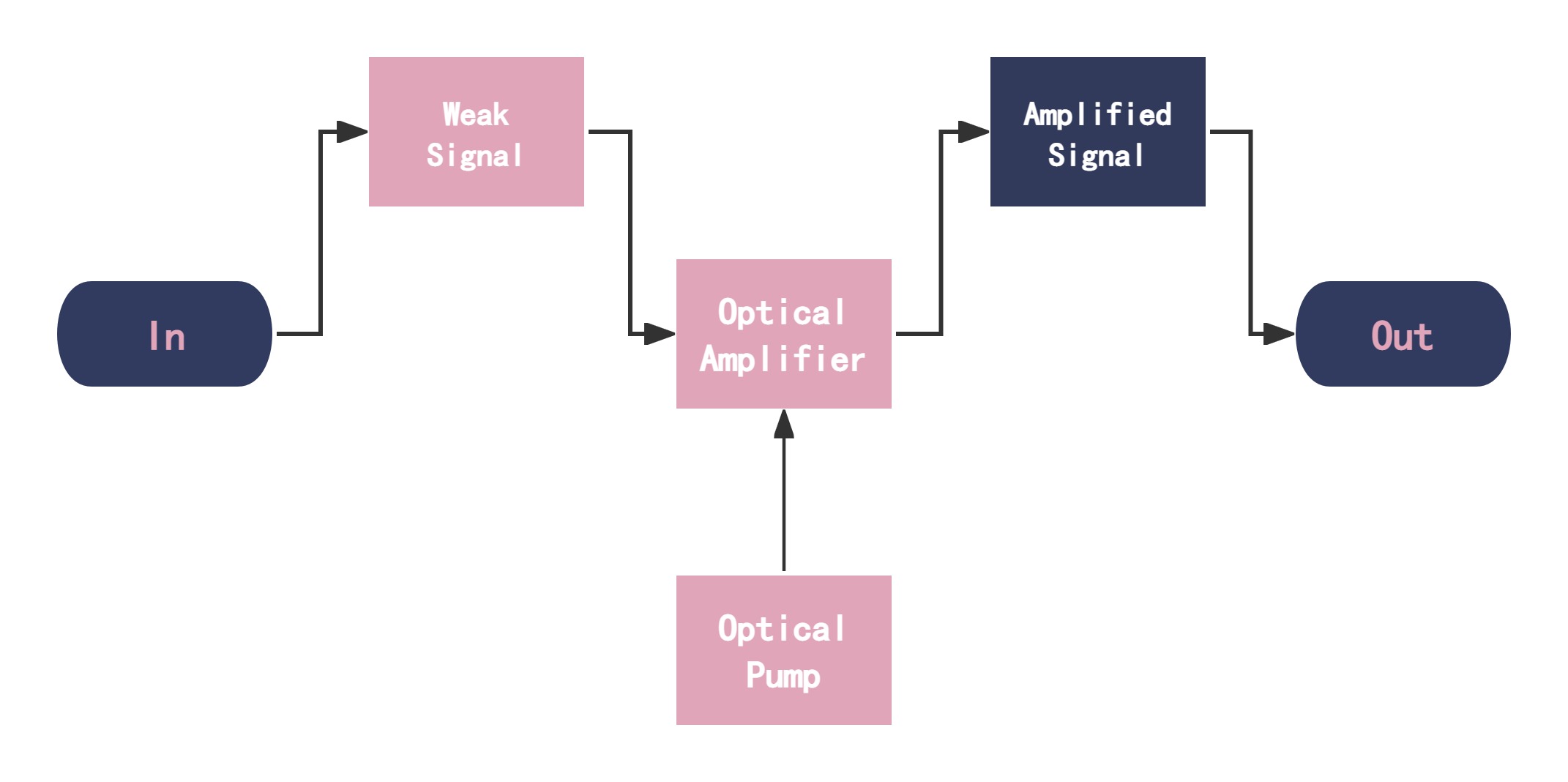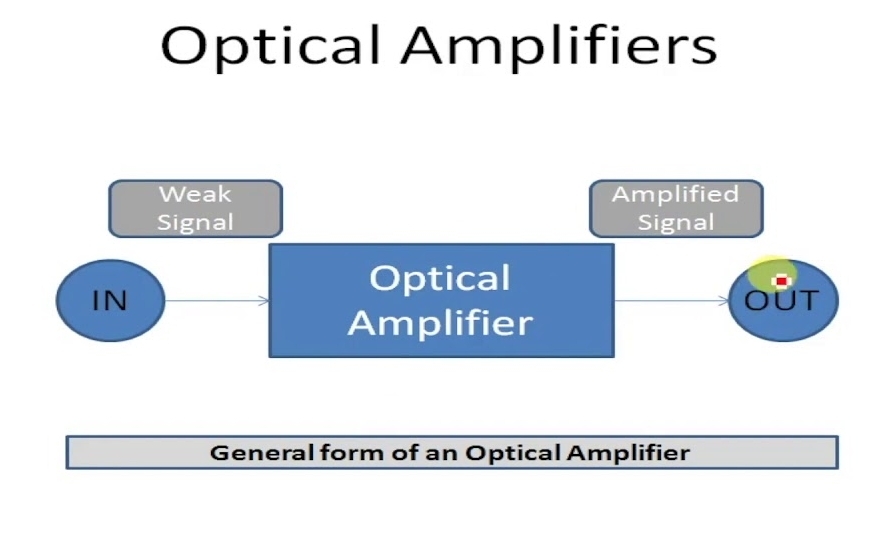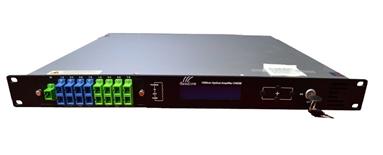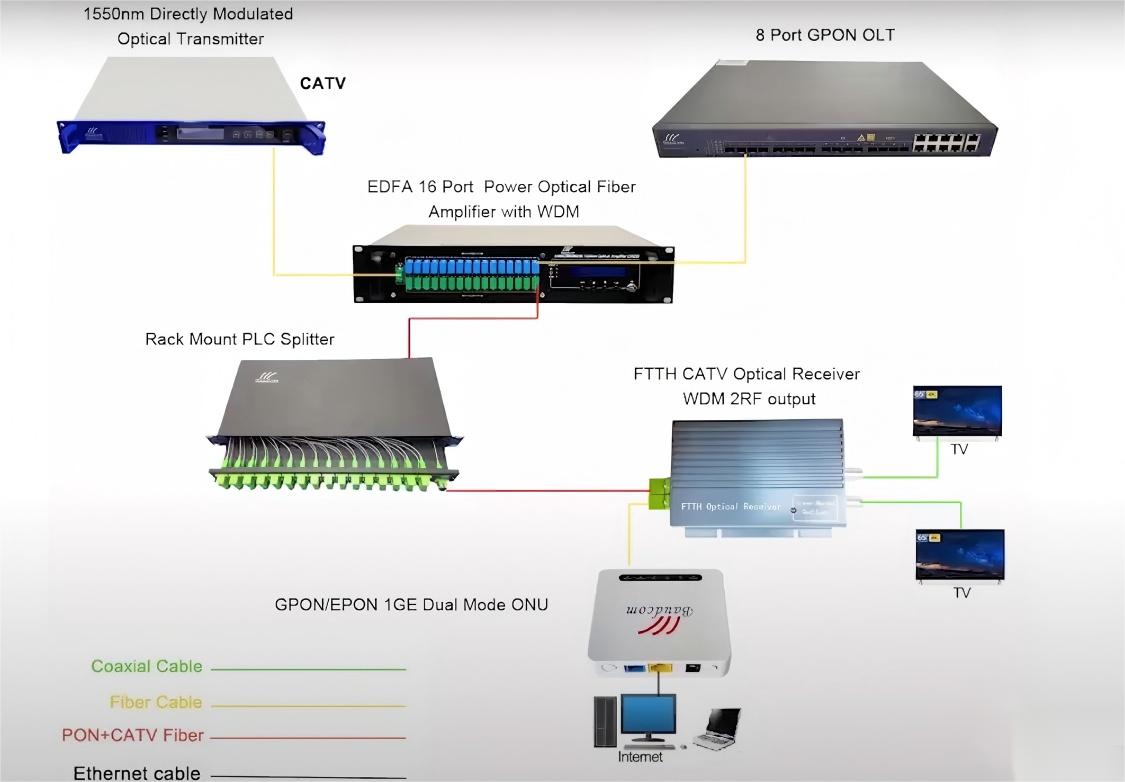What is an Optical Amplifier? How Does an Optical Amplifier Work?
In the world of telecommunications and fiber optics, data transmission needs to travel over long distances without losing strength or quality. Optical signals, which are typically used to transmit data through fiber optic cables, are no exception. As these signals travel, they can degrade and lose their integrity due to scattering, absorption, and other losses. This is where optical amplifiers come into play. But what exactly is an optical fibre amplifier, and how does it work?
What is an Optical Amplifier?
An optical fibre amplifier is a device that amplifies an optical signal directly, without the need to first convert the signal to an electrical one. Optical amplifiers are crucial in fiber optic communication systems because they enable signals to maintain their strength over long distances, thereby minimizing the necessity for frequent signal regeneration or conversion between electrical and optical forms.
In essence, optical power amplifier boost the intensity of light signals in optical fibers, ensuring that the signal strength is sufficient to be received and interpreted correctly at the receiving end. This is especially crucial in long-haul optical networks, such as those used for internet backbones, telecommunications infrastructure, and undersea cable systems.
See more visit:Optical Amplifier
How Does an Optical Amplifier Work?
The operation of an optical power amplifier relies on a principle known as stimulated emission, which is the process that occurs when an electron in a higher energy state falls to a lower energy state and releases energy in the form of light.
Let’s break it down step by step:
1. Signal Input: The optical power amplifier receives a weak optical signal, typically in the form of light pulses carrying data. This signal is fed into the amplifier.
2. Gain Medium: The core of the optical amplifier is a material known as the gain medium. This is typically a fiber doped with rare-earth elements like erbium, ytterbium, or praseodymium. These elements have specific energy levels that can be "excited" by an external light source (called a pump).
3. Pumping Process: The gain medium is pumped with a high-intensity light source, often from a laser or LED, that provides energy to excite the atoms or ions within the medium to a higher energy state.
4. Stimulated Emission: When the incoming weak optical signal (the signal light) passes through the gain medium, it interacts with the excited ions or atoms. These atoms or ions, upon receiving the signal, release photons of the same wavelength and phase as the incoming signal. This process is known as stimulated emission.
5. Amplified Output: As a result of this interaction, the weak signal is amplified. The output of the amplifier is a stronger version of the input signal, with the same wavelength and characteristics but much higher intensity.
6. Signal Transmission: The amplified signal is then transmitted through the fiber optic cable to its destination--commonly optical receiver, where it can be received and processed without degradation.
Types of Optical Amplifiers
There are several types of optical fibre amplifier, each designed for different applications:
1. Erbium-Doped Fiber Amplifier (EDFA): The most widely used type of optical power amplifier. EDFA uses erbium-doped fiber as the gain medium and is highly efficient for amplifying signals in the 1.55 µm wavelength range, which is commonly used in fiber optic communications.

2. Fiber Raman Amplifier: This type of amplifier works by using the fiber Raman amplifier scattering effect. Instead of using a doped fiber, it amplifies the signal by scattering light through a transmission fiber with the help of a pump laser. fiber Raman amplifier can provide broader bandwidth amplification compared to EDFAs.
3. Semiconductor Optical Amplifier (SOA): These are compact and efficient amplifiers made from semiconductor materials. They can be integrated with other components in optoelectronic systems and are often used in metro and short-haul networks.
Why Are Optical Fibre Amplifier Important?
Optical signals lose power as they travel through fiber optic cables due to scattering and absorption by the material. Without amplification, the signal would degrade and eventually become undetectable. This loss becomes especially pronounced over long distances, which is a common scenario in global communication networks.
In the past, to boost signals over long distances, they had to be converted from optical to electrical, amplified, and then converted back to optical signals. This process was not only slow but also complex and costly. Optical amplifiers simplify this by allowing the signal to remain in its optical form throughout the transmission process, thereby improving efficiency and reducing costs.
Advantages of Optical Amplifiers
· Signal Integrity: Optical fibre amplifier maintain the integrity of the signal because they amplify the optical signal directly, without needing to convert it to an electrical signal.
· Cost-Efficiency: By amplifying the signal optically, optical amplifiers reduce the need for expensive signal regeneration equipment.
· High Capacity: With the ability to amplify signals over long distances, optical fibre amplifier support high-capacity communication networks.
· Scalability: optical power amplifier can be easily integrated into existing fiber optic systems, making them a scalable solution for expanding network capacity.
Applications of Optical Amplifiers
Optical amplifiers are used in a wide range of applications, including:
· Long-Haul Communication: optical fibre amplifier are used extensively in submarine cable systems and long-distance fiber optic links, where signal degradation over vast distances would otherwise be a problem.
· Optical Networks: They are a key component in dense wavelength division multiplexing (DWDM) systems, which allow for the transmission of multiple data streams on the same fiber by utilizing different wavelengths.
· Fiber Optic Sensors: In sensor networks,optical fibre amplifier help maintain the strength of signals over large areas.
· Satellite Communications: Optical amplifiers are increasingly used in satellite communication systems, where data needs to be transmitted over large distances through space.

Conclusion
In modern telecommunications, optical power amplifiers play a critical role in maintaining the strength and quality of signals as they travel over long distances. By utilizing the principle of stimulated emission to amplify light directly, these devices ensure that fiber optic networks remain efficient, high-capacity, and cost-effective. As technology continues to evolve, optical amplifiers will remain a vital component in pushing the boundaries of data transmission and connectivity. They maintain the optical signal throughout the transmission process, thereby improving efficiency and reducing costs.